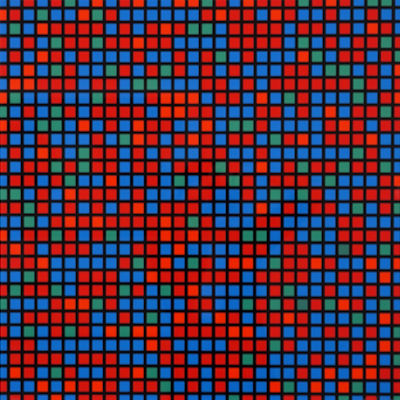
Details
Artist
Styles
// Victor Vasarely's Firka is a limited-edition silkscreen print that exemplifies his mastery of optical art, creating an illusion of depth and movement through geometric abstraction. The composition is structured around a grid of squares and circles, layered in shades of blue, purple, pink, and black. Each quadrant of the artwork seems to bend and warp, drawing the viewer’s eye toward the center and giving the impression of a three-dimensional form on a flat surface. Vasarely’s meticulous use of color and pattern generates a mesmerizing, pulsating effect that shifts as the viewer’s gaze moves across the piece. This work is a prime example of Vasarely's exploration of perception and visual dynamism in the Op Art movement.
Firka
form
Medium
Size
82 x 76 cm
- Inches
- Centimeters
Edition
Price
- USD
- EUR
- GBP
Details
Artist
Styles
// Victor Vasarely's Firka is a limited-edition silkscreen print that exemplifies his mastery of optical art, creating an illusion of depth and movement through geometric abstraction. The composition is structured around a grid of squares and circles, layered in shades of blue, purple, pink, and black. Each quadrant of the artwork seems to bend and warp, drawing the viewer’s eye toward the center and giving the impression of a three-dimensional form on a flat surface. Vasarely’s meticulous use of color and pattern generates a mesmerizing, pulsating effect that shifts as the viewer’s gaze moves across the piece. This work is a prime example of Vasarely's exploration of perception and visual dynamism in the Op Art movement.
- Recently Added
- Price (low-high )
- Price (high-low )
- Year (low-high )
- Year (high-low )
What is geometric abstract art?
Geometric abstraction is a form of abstract art that uses geometric shapes arranged in a non-illusionistic space (though not always) and combined into non-representational (non-objective) compositions. Based on years of artistic research, some artists have proposed that geometric abstraction offers a solution to modern challenges by rejecting traditional illusionistic practices in favor of clarity and simplicity.






































































